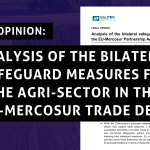At the coming Environment Council meeting you will discuss several interlinked topics from climate change to biodiversity protection, incorporating zero pollution, circular economy and industrial emissions generally and specifically on F-gases and ozone-depleting substances. These policies address issues that mainly result from unsustainable production and consumption practices. We are writing today to focus on the need for an ambitious and ground-breaking revision of the Industrial Emissions Directive (IED), in the context of continuing to build a coherent and robust EU industrial policy toolkit.
2022’s amplification of multiple crises within and beyond Europe – energy and cost of living hikes, severe droughts and floods, and forest fires – have affected or were worsened by the degrading state of the environment. These situations are yet another alert to stop unsustainable production and consumption patterns that are threatening the very existence of nature and humanity, an alert echoed in this year’s IPCC report. The multiple emergencies we face take us increasingly towards a situation of uncertainty and volatility, and by focusing on immediate measures, we increase the risk of losing track of important medium- and long-term goals. A swift and timely delivery on the EU Green Deal (EGD) objectives is more pressing, providing a compass while addressing the EU’s fair share of energy and resource use in combating these emergencies.
The IED’s revision is a timely opportunity to help change industry’s unsustainable patterns and address resource and energy over-consumption, especially as global consumption of biomass, fossil fuels, metals and minerals is expected to double in the next 40 years and waste generation is to increase by 70% by 2050. This growing rate of resource consumption is not compatible with “keeping 1.5° alive”, especially as 50% of global GHG emissions is due to extraction and processing of materials, fuels and food. These activities also result in 90% of biodiversity loss, and 50% of negative health impacts.
The IED’s integrated approach makes it a key piece of the EU legislative framework, covering around 50 000 installations, accounting for 20% of the EU’s air and water emissions and 40% of GHGs. Very worryingly, the IED currently excludes GHG emissions, treating them as separate emissions to be addressed by the ETS, artificially separating activities that could mitigate climate and resource impacts.
The IED’s revision is also an opportunity to align with EGD objectives and to use its integrated approach as the best way to anticipate, plan and drive holistic transformation of EU industry. The directive needs to trace company pathways to contribute equally to meeting our climate targets and our circularity objectives to reduce the EU’s carbon footprint and double its circular and material use rate by 2030.
Therefore, CAN Europe calls on you to:
- Reinforce the IED’s integrated approach: Make use of this approach to prevent pollution at source for all pollutants, including GHGs, by allowing competent authorities to set limit values for those gases in permits for all installations. Therefore, amend article 9(1) to ensure complementarity between the technically possible reduction of GHG emissions at process level and the pricing system for this pollution regulated by the ETS.
- Support industrial transformation: Prepare industries to adapt their production processes through site-level transformation plans (article 27d) to be aligned with EGD objectives of carbon neutrality, and reduced energy and resource consumption.
- Ensure synergies between climate and circularity: Circularity is recognised as crucial in order for industry to achieve carbon neutrality, reduce pollution and decouple resource use from growth. Maintain the systematic introduction of mandatory environmental performance values in the conclusions on the best available techniques and the consideration of the lifecycle environmental performance of the supply chain in permit conditions.
A coherent and comprehensive EU industrial policy toolkit needs to build upon the ETS and CBAM, which are pure pricing mechanisms, and must include ambitious policies addressing products and production processes. The coming Ecodesign of Sustainable Products is designed to address products, while the IED addresses production processes.
We urge you to seize this opportunity to shape an EU industrial policy toolbox for the 21st century, one that inspires innovation towards societal needs while reducing pressures on the planet’s life-giving systems.
Download the letter here.



